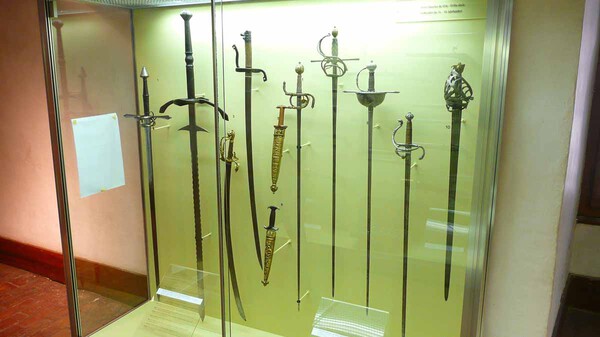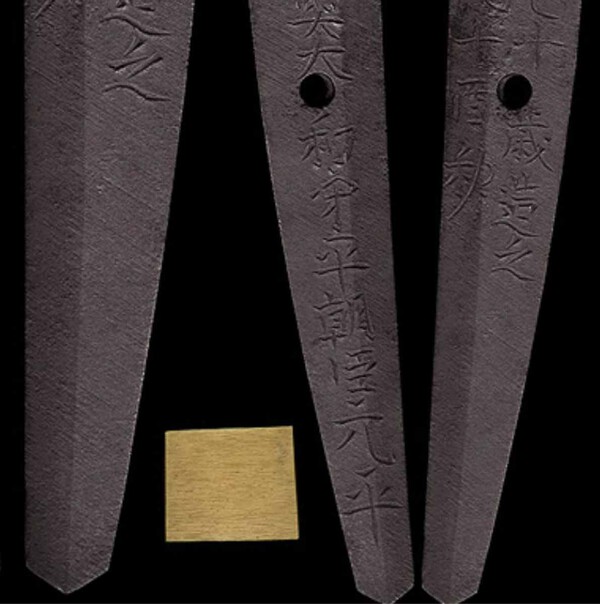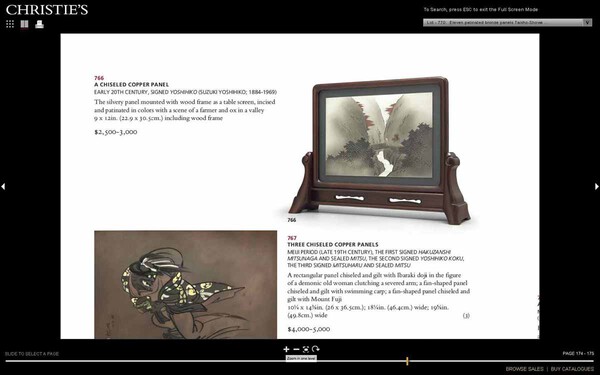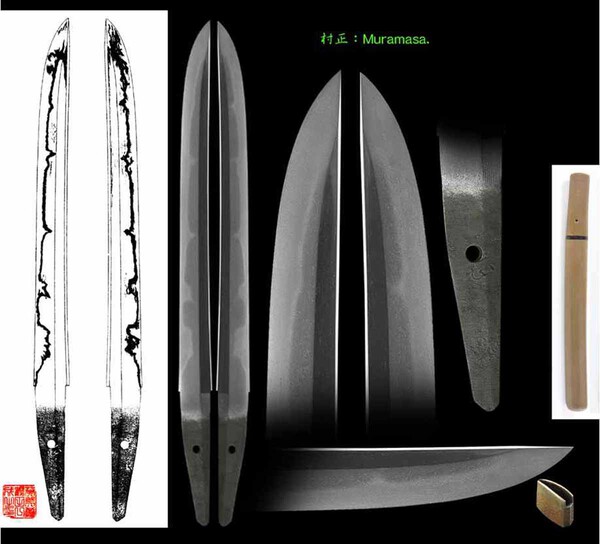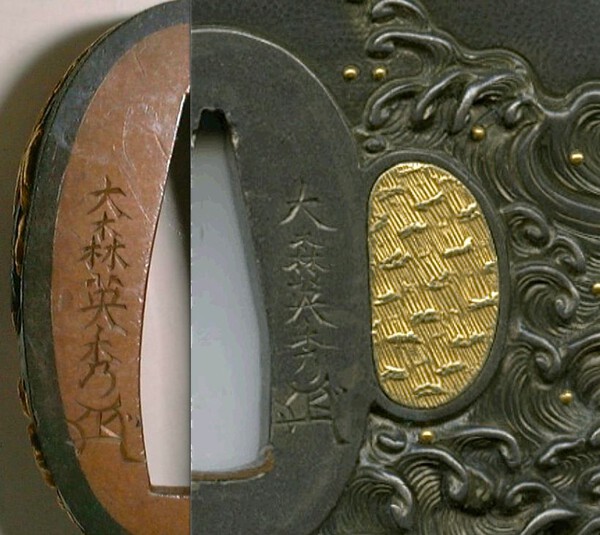-
Posts
1,029 -
Joined
-
Last visited
Content Type
Profiles
Forums
Events
Store
Downloads
Gallery
Everything posted by Eric H
-
In 1852 Kiyondo started to study under Kiyomaro as his last student.. Kiyondo was responsible for succeeding Kiyomaro after his master‘s suicide in 1854 supplanting even Yamaura Saneo, Kiyomaro‘s elder brother and senior students Suzuki Masao and Kurihara Nobuhide. By sense of duty Kiyondo forged all of the swords already ordered to satisfy the customers and to protect his masters reputation. Kiyondo‘s boshi kaeri has hakikake which appears just like the marks of a comb and this kind of characteristic is not seen in the work of Kiyomaro schools other smiths. Eric
-
An interesting coincidence is the fact that oversized swords were in use in Japan in the Muromachi period as well in Europe in the Late Middle Ages. The sword called „Zweihänder“ (two-handed sword) was worn on the back, as the illustration (etching by Daniel Hopfer ca.1470-1536) shows, and was used in battle by foot soldiers (Landsknechte). The blade-lengths of these swords varied from 80 cm to 125 cm and the handles until 40 cm. On September 15, I visited the Castle of Grandson. The oversized sword with the wavy blade is a "Zweihänder", a two-handed sword...wielding requires two hands. Eric
-
I think both Tamahide are of equal skill hence the blade‘s characteristics lead perhaps more precisely to the one or the other. Eric
-
Mei change over time, more or less. The „ryu“ kanji is convincing in differentiation between the Shodai and Nidai. Are there Nidai examples with mei after his father‘s death? Table from left to right: Shodai approved your Wakizashi Nidai Shodai Eric
-
-
Some additional information on Tamahide / Tamateru: In the reference books (Sesko, Hawley) shodai and nidai are listed as Tamateru. Nihonto Club..from Tsunafusa - Tamahide - Tamateru. Eric
-

Swords Scrolls box lid title translation needed
Eric H replied to Ed Hicks's topic in Translation Assistance
The 4 scrolls: HARU no MAKI NATSU no MAKI AKI no MAKI FUYU no MAKI Eric Kanzan Ôshigata.pdf -
-
"Ido" chawan is considered the first of three famous types of chawan. First Ido, second Raku, third Karatsu... according to Japanese Connoisseurs. I appreciate John‘s chawan. Eric
-
Swords and Ceramics...two worlds totally different...the sword as a result of strived perfectness, the chawan's beauty in its imperfectness. The worlds most famous Chawan, Kokuho: the "Kizaemon Ido" H 8.9 cm - D 15.4 cm - F 5.5 cm Choson period 16th c. Koho'an - Daitokuji - Kyoto viewtopic.php?f=6&t=17412 Eric
-

Suzuki Yoshihiko- Information please
Eric H replied to tony edmunds's topic in General Nihonto Related Discussion
-

Suzuki Yoshihiko- Information please
Eric H replied to tony edmunds's topic in General Nihonto Related Discussion
Christie's New York - 18 September 2013 - Japanese & Korean Art - Lot 766 and Lot 770 Both not sold Eric -
Fine, the burnished Shinogi-ji should show the Hada within it. thanks Eric
-
On 6 September 2011, the SNB (Schweizerische Nationalbank) put the minimum exchange rate of the Euro against the Swiss Franc at a fixed lower bound of 1 Franc 20. This indicates that the massive overvaluation of the Swiss Franc constitutes an acute threat to the Swiss economy. The Euro had just achieved virtually a parity with the Swiss Franc exchange rate. Eric
-
The US$ as also the British Pound have constantly lost value against the CHF since 1970 and the economic situation of today signalised that this will continue in the future. US$/CHF 1970 : 1 US$ = CHF 4.31 2013 : 1 US$ = CHF 0.91 today GBP/CHF 1970 : 1 GBP = CHF 10,32 2013 : 1 GBP = CHF 1,47 today Look at the US Debt Clock : http://www.usdebtclock.org/ Eric
-
No doubt Bob Benson knows how to make a proper polish to a blade. Anyhow the burnished parts give a beautiful contrast to the other sections of the blade, a work that requires tactile skill...and it is an essential aspect to the beauty of the Japanese sword. On the basis of the posted photos cannot be ascertained whether the shinogi-ji etc. is burnished or not. Hoanh, what is it? Eric
-
The shape of this Tanto is described as shobu-zukuri. http://www.samurai-nippon.net/844/index.html Eric
-
Now I have found and read the article, thanks Eric
-
Do I overlook something?...I cannot find the link you have mentioned several times, I see your website and the page on NTHK-NPO-Shinsa, that's all. Eric
-
It's from Nobuo Nakahara's book Both explanations of „shobu zukuri“ are accepted...the shinogi suji runs up to the point or reaches the mune before the point, sometimes very close before the point. Examples from Aoi-website: Muramasa shobu zukuri Kanemitsu shobu zukuri Eric
-
-
In this context I have a very interesting essay by Paul R. Allman. He got a gift from Albert Yamanaka a „fine old Koto blade...adding “to my great regret I have sold it“. Eric
-
The three Beauties are by Kitagawa Utamaro, the other prints by Toshusai Sharaku. It is not visible from your pics if these prints are modern reproductions ore original Woodblock prints. Sharaku: http://www.christies.com/lotfinder/prin ... tails.aspx Utamaro: http://www.christies.com/lotfinder/prin ... tails.aspx Eric
-
I think neither the shape of nakago (furisode) nor the unusual placement of mei on a Tanto (Kunimitsu) is indicative for metezashi. Metezashi style can be applied to any short, thick and stout Tanto...the wearing on the right side, edge down, in special koshirae, makes it used as metezashi style. About „metezashi“ in NBTHK Journals: This shape originated at the end of the Muromachi period by one of the Sunshu Shimada smiths. Sukemune made a tanto in this shape and he carved “Osoraku” hirakana on the tanto, and the name of this style came from this. In the beginning, this was supposed to have been Takeda Shingen’s treasured tanto, and according to the Umetada Meikan, it later belonged to Katagiri Katsumoto’s son Takatoshi ( Izumo no kami). Originally, the tanto was made to be used in a metazashi style (to be worn on the right side, so in close combat it could be used to cut an enemy’s neck). In general usage, the osoraku name refers to this kind of strange tanto shape which was never seen before. Another opinion is given in the Token Bijutsu Magazine’s No. 45 issue (Showa 32) where Tsujimoto Naoo wrote that this style tanto was very fearful to look at and couldn’t be compared to other tantos, so the smith put the word “osoraku”on it. (NBTHK Nr. 677, June 2013) There is a famous tanto nicknamed ‘Osoraku-zukuri’ by Sukemune and owned by Katagiri Katsumno. Four hiragana of ‘O So Ra Ku’ are carved on the tanto and it means ‘Perhaps’ (Perhaps, no tanto in this shape could exist) (TB No. 599 Nihon Koto Shi)
-
Yes, and the picture provided by Markus is from that article. Eric







